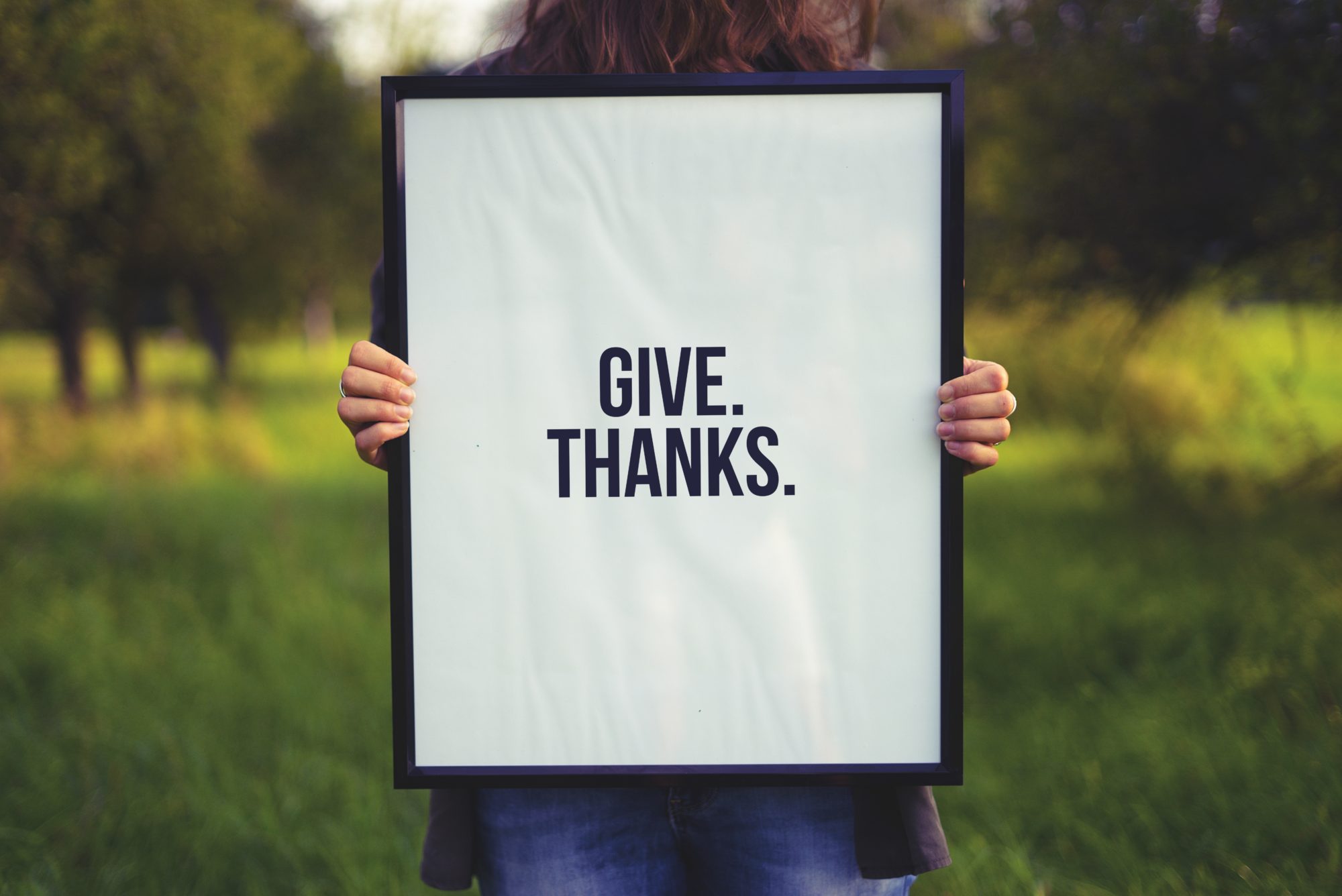One of the most powerful positive emotions we have in this life is gratitude; mountains of research indicate that gratitude is part of the happiness holy grail. Compared with those who don’t practice gratitude, scientists have found that people who practice gratitude:
- Are considerably more enthusiastic, interested, and determined
- Feel 25% happier
- Are more likely to be both kind and helpful to others
“Gratitude is a skill, like learning to speak a new language or swing a bat.” Click To Tweet
The key to creating gratitude practices that work is to add in an element of creativity and novelty. Think up a practice that you find fun and simple, and each time you practice, try to think of novel things that you are grateful for or new dimensions of those things and people you appreciate. Here are 5 of my favorite gratitude practices to get you started:
Contemplate death and destruction.
(Bet you didn’t see that one coming!) When researchers have people visualize their own death in detail, their gratitude increases. Similarly, simply imagining not having something you love can make you feel more grateful for it. When researchers had volunteers envision the sudden disappearance of their romantic partners from their lives, they felt a lot more gratitude for them. We also feel more gratitude when we imagine that positive life events never happened—like landing a new job or moving closer to family.
Give up—or change up—what you really love.
I know, depriving yourself doesn’t seem fun, but entitlement and adaptation undermine appreciation. Gratitude actually arises naturally in conditions of scarcity—for example, when we are hungry, we are more grateful for food than when we are full. Not surprisingly, research shows that we enjoy things more when we give them up for a little while; for example, people who gave up chocolate for seven days enjoyed it more at the end of the week than people who indulged all week. More surprisingly, people report enjoying their favorite TV shows more when they are interrupted occasionally (even by commercials). This is probably why Lent is a common religious practice!
Keep a group “gratitude list” or a collection of things that colleagues or family members feel thankful for.
Post a huge sheet of paper in a public place and ask everyone to contribute to it when the spirit moves them. Anything can go on the list, no matter how insignificant or important— people, places, stuff, events, nature. Variations on this theme are endless; try gratitude garlands, walls, trees— anything you can put a sticky note on or hang a tag on will work.

Start a tradition of writing “appreciations” on place cards at family dinners or on holidays. Depending on your comfort level for group sharing, make folded place cards for each person present, and then ask people to write a few adjectives that describe what they appreciate about one another on the inside of the place cards. Don’t ask people to write something about everyone present unless they want to—you don’t want to force the exercise. But do make sure that everyone has at least one thing written inside their place card so that during the meal you can go around the table and share appreciations.
Write letters for “large” and “small” gratitudes. Large: Write a thank-you letter to someone who is important to you but you haven’t properly thanked for something non-material, and then deliver it in person and read it out loud. Small: Text a quick and unexpected thank-you note for kind words spoken to someone who lent a helping hand, or to say thanks for a fun day.
This post is from a series about flourishing from the “Science of Finding Flow,” an online course I created as a companion to my book The Sweet Spot: How to Accomplish More by Doing Less. Want to go on to the next class or start the course from the beginning? It’s free! Just go to The Science of Finding Flow course page. Enjoy!

